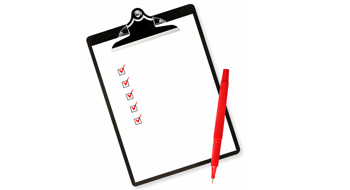

Surveys are powerful tools for gauging your members’ opinions and needs. When well designed and successfully implemented, they can provide decision-makers with valuable, direction-setting data.
On the flip side, done poorly, surveys can cause long-lasting damage. In fact, recovering from a poorly executed survey can take years. A negative survey experience can leave participants feeling disconnected from the organization, and survey fatigue that results from trying to redo a poor initial survey attempt can undermine future response rates—no matter how well designed your next survey. When a survey goes off the rails, it’s not simply a matter of dusting off and trying again.
Here are some tips to help your organization avoid its own survey disaster.
- Start with a clear understanding of your objectives, and be realistic about how much one survey can accomplish. Never conduct a survey simply because it’s an expected exercise.
- Bring senior leaders and front-line influencers into the loop as early as possible. Make sure you secure their support. If they don’t see any value in your survey, their lack of interest will inevitably filter down to the members your survey targets and undermine participation.
- Ask the right questions. This doesn’t mean designing questions to get the answers you want. Respondents will spot a leading (or misleading) question a mile away. Figure out what you need to know to meet your objectives, and ask honest questions.
- Keep in mind that open-ended questions asking for participant commentary require more effort on the part of respondents, as well as those responsible for tabulating and analyzing the results. Use these questions sparingly. If possible, stick to a simple answer scale that provides clear direction without forcing an inaccurate response.
- Never ask a question you don’t want to hear the answer to and aren’t prepared to act on. Just asking a question sets up an expectation among survey participants that you are prepared to act on the results. For example, if your organization isn’t about to offer a dental plan, don’t ask employees if they want one.
- Test it! Pre-survey focus groups are a great way to find out if your questions are clear and will yield the direction-setting information you need. Equally important, they can be used to get buy-in from key opinion leaders (once they have invested time and energy in the design process, opinion leaders tend to have a vested interest in the success of the survey).
- Promote your survey! One of the worst outcomes for any survey is failure to get sufficient responses to produce a statistically valid sample. Your audience needs to know why you want their feedback and what’s in it for them. Incentives, such as prize draws, can help drive participation—especially for the uninitiated who haven’t experienced the meaningful change that can come from a survey.
- Share findings with employees. Reporting the survey results (even at a high level) will demonstrate that your organization is committed to open, honest communication. Be sure to tell employees what actions you plan to take based on the survey results—and then follow through. If you don’t provide participants with concrete evidence that the survey has sparked action, you will seriously compromise your ability to solicit their feedback in the future.
Smart organizations understand that surveys are as much about creating dialogue as they are about gathering meaningful data.
Done well, a survey will do more than let you hear and acknowledge the opinions of employees. It will also help raise awareness about key issues and improve the line of sight between business objectives and employee preferences.
